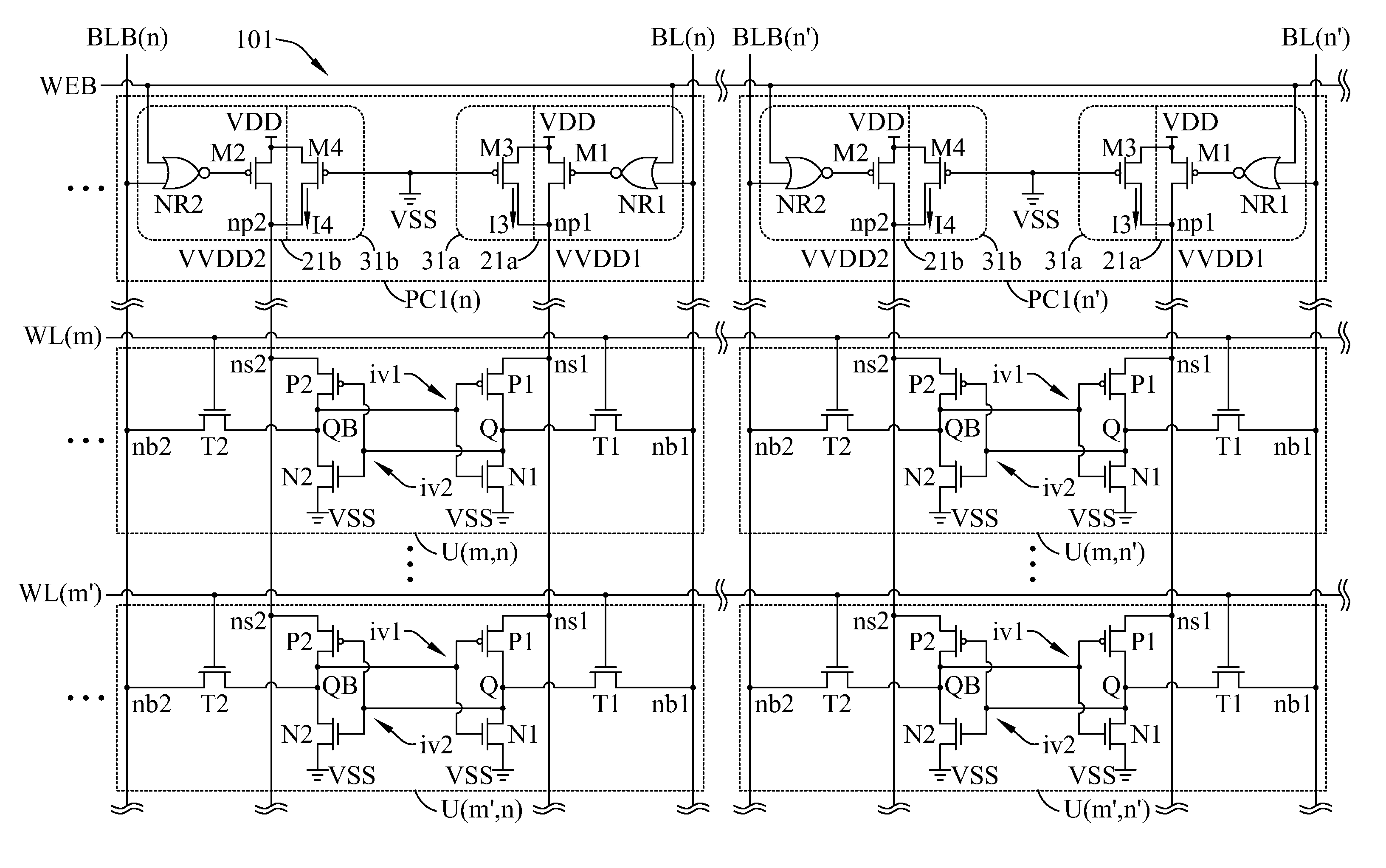Data-aware dynamic supply random access memory
a random access memory and data-aware technology, applied in the field of random access memory, can solve the problems of weak strength disadvantageous to write, data read and data write mutual conflict, etc., and achieve the effects of reducing read disturb, improving read static noise margin (rsnm), and reducing read confli
- Summary
- Abstract
- Description
- Claims
- Application Information
AI Technical Summary
Benefits of technology
Problems solved by technology
Method used
Image
Examples
Embodiment Construction
[0019]The present invention will now be described more specifically with reference to the following embodiments. It is to be noted that the following descriptions of preferred embodiments of this invention are presented herein for purpose of illustration and description only. It is not intended to be exhaustive or to be limited to the precise form disclosed.
[0020]Please refer to FIG. 1 which illustrates a RAM 101 according to an embodiment of the invention. The RAM 101 can be a static RAM which includes a plurality of cells, such as cells U(m,n)U(m,n′)U(m′,n) and U(m′,n′) in FIG. 1; each cell is a 6T static RAM cell. These cells are arranged in an array of rows and columns; for example, the cells U(m,n) and U(m,n′) are arranged in a same row and correspond to a same word-line WL(m); the cells U(m′,n) and U(m′,n′) are arranged in another row and correspond to another word-line WL(m′). The cells U(m,n) and U(m′,n) are arranged in a same column and correspond to a pair of bit-lines BL(...
PUM
 Login to View More
Login to View More Abstract
Description
Claims
Application Information
 Login to View More
Login to View More - R&D
- Intellectual Property
- Life Sciences
- Materials
- Tech Scout
- Unparalleled Data Quality
- Higher Quality Content
- 60% Fewer Hallucinations
Browse by: Latest US Patents, China's latest patents, Technical Efficacy Thesaurus, Application Domain, Technology Topic, Popular Technical Reports.
© 2025 PatSnap. All rights reserved.Legal|Privacy policy|Modern Slavery Act Transparency Statement|Sitemap|About US| Contact US: help@patsnap.com



